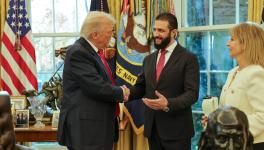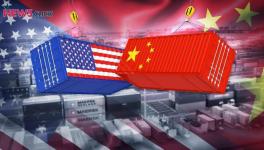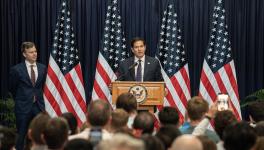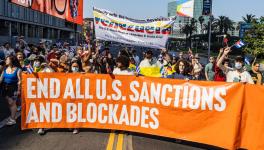The Long Siege of Cuba
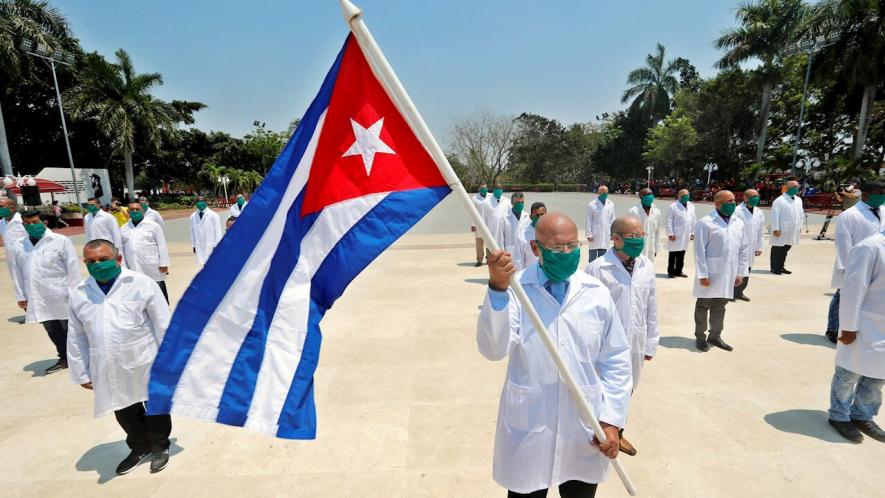
60 years of Cuban medical cooperation.
The economic embargo of Cuba by the US has now lasted over 60 years, being formally imposed in 1962. It is held together by a number of laws enacted by the US, including the Trading with the Enemy Act 1917, Foreign Assistance Act of 1971, Cuban Assets Controls Regulations 1963, Cuban Democracy Act of 1992 and the Helms Burton Act of 1996. These acts bar US citizens from conducting any trade that may be in the interest of Cuba, from owning or trading Cuban sovereign national debt, and from Cuban banks from operating in the US.
US citizens are still able to travel to Cuba yet they are not able to spend money there without a license from the Office of Foreign Assets Control. Recently, in 2021 the US reinstated Cuba into the State Sponsor of Terrorism list, stating that Cuba harbours several fugitives from the US as well as members of the Columbian National Liberation army, which the US has declared to be a terrorist organisation.
The cost of these sanctions, sanctions being what appears to be forefront in the mind of US President Donald Trump, to Cuba over 60 years has amounted to $933 billion. The United Nations has urged the US to lift its sanctions on Cuba, citing a shrinking of the island nation’s GDP, blackouts, food shortage and inflation.
As the political situation stands in the US currently, it is highly unlikely that the sanctions against Cuba will be lifted any time soon, as only the US Congress has the power to do so, and while occasionally Bills are introduced in the Congress to repeal the statues, there is at present not enough political will to have these passed.
Beyond immediate economic gains in terms of monetary value, these embargoes also mean that Cuba is denied markets, international aid and technology transfers. This is not restricted to those from the US alone. For instance, the earlier mentioned Helms-Burton Act of 1996 allows US citizens to sue foreign companies in US courts who have traded in property that was nationalised by the Cuban government after the 1959 Revolution. This has meant that companies in Canada, and the European Union have been deterred from trading or investing in Cuba so as to not risk a lawsuit or reputational harm.
Another Act that has seriously curtailed the facility of international trade with Cuba has been the Cuban Democracy Act of 1992. This Act prevents any ship from docking at a US port for 180 days after the vessel has loaded or unloaded goods at a Cuban port. This limits Cuba’s access to regular shipping lines and forces the island nation to rely on smaller and more expensive routes.
Perhaps, the most serious measure that has curtailed Cuba’s integration into the international financial system is the fact that most international trade and financial transactions are denominated in US dollars. Regulations by the Office of Foreign Asset Control prohibit transactions in dollars for deals that entail Cuban interests. The choice left to foreign banks is to either conduct Cuba related transactions and face massive US fines, potentially losing access to the US financial system, or not to conduct deals that entail Cuban interests.
This stark alternative has effectively meant that most international banks, including those based in countries that are friendly to Cuba, have chosen the latter. The price of doing business with Cuba for banks have been severe. BNP Paribas, for example, in 2014, had to pay a fine of nearly $9 billion to the US authorities for violating such sanctions. This has made it extremely difficult for Cuba to pay for essential imports, such as food and medicine, receive remittance (that may be desired to be sent by Cubans living and working in the US back to their family in Cuba), and conduct basic international financial transfers.
Cuba’s main partners in international trade are Venezuela, following agreements formalised by the Hugo Chavez government, China, Spain, Vietnam, Brazil, Mexico and Canada. The island nation, however, also has trade relations with India, which constitute Cuban exports of tobacco, nickel, raw hides and leather and Indian exports of pharmaceutical products, vehicles, chemicals, plastic and food. The total volume of trade between India and Cuba during 2022-2023 was just under $84 million .
India has consistently voted in the UN in favour of lifting the US embargo against Cuba. As recently as 2024, the Indian First Secretary Sneha Dubey reiterated the damaging effects of the embargo on Cuba’s economy, and people, underlining that India, as the world’s most populace democracy, stands with the UN Assembly in its unambiguous rejection of domestic US laws having an extraterritorial impact. In the vote in the Assembly, 187 nations voted against the embargo with only the US and Israel supporting it.
In recent history, there appeared to have been a thaw with President Barack Obama in 2014 reopening the US embassy in Havana and the Cuban embassy in Washington, lifting restrictions on remittances, travel, and allowing the Cuban government to open a bank account in the US. These measures, however, have largely been reversed in President Trump’s first term itself.
The writer is is an independent journalist who is pursuing a Ph.D. The views are personal.
Get the latest reports & analysis with people's perspective on Protests, movements & deep analytical videos, discussions of the current affairs in your Telegram app. Subscribe to NewsClick's Telegram channel & get Real-Time updates on stories, as they get published on our website.










